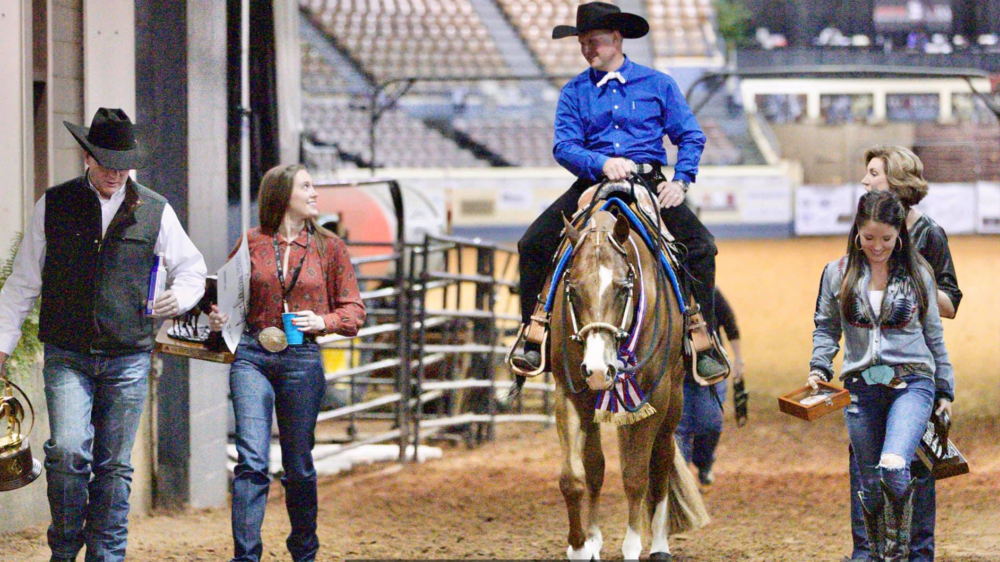The songs of chirping birds, new leaves on the trees, warmer weather…spring rolls around year-after-year with these familiar sights and sounds to broadcast its presence. But for members of the horse show industry, spring shows itself in a slightly different way: the newborn foals standing on wobbly legs alongside a trusty broodmare, newly-minted yearlings romping in the pastures with one another, and freshly-started two-year-olds beginning to learn the ropes of their careers as riding horses.
Each one of these youngsters is full of untapped potential. Some will go on to be futurity horses later in the year. Others will be slow to mature, but with adequate time and dedication, they may become a rockstar older show partner. The difference between the two?
Well, that is what GoHorseShow had the opportunity to speak about with Brian Isbell Garcia, Stephen Stephens, Buddy Laney, and Andy Cochran. Each breeder and trainer spoke of his specific method of evaluation for these promising young horses to decide which ones are ready to begin training. We have compiled their answers to create a basic rundown of a few key characteristics to look for.
In this case, size does matter
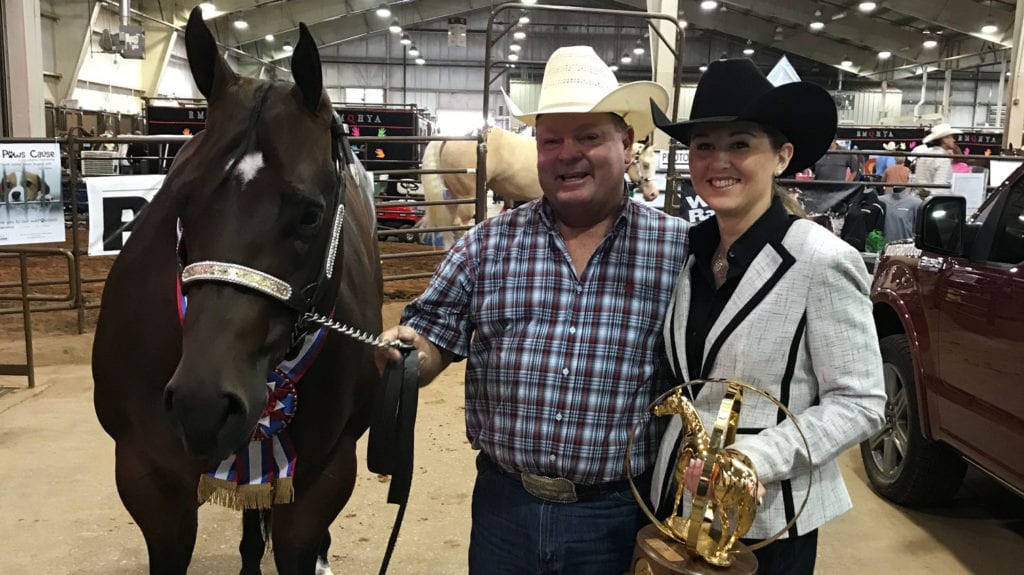 Buddy Laney has been training halter horses for forty-five years. Evaluating the size and strength of his weanlings is hugely important to his process. “We judge our futurity babies on if they are strong and mature enough to handle us starting to fit them up. You’ve got to go by the individual – some babies are just better eaters, have better legs, and are just stronger. Some of them are still a little immature and can’t take the pushing part of it. You’ve just got to stay off of those,” he explained.
Buddy Laney has been training halter horses for forty-five years. Evaluating the size and strength of his weanlings is hugely important to his process. “We judge our futurity babies on if they are strong and mature enough to handle us starting to fit them up. You’ve got to go by the individual – some babies are just better eaters, have better legs, and are just stronger. Some of them are still a little immature and can’t take the pushing part of it. You’ve just got to stay off of those,” he explained.
Especially in preparing for the halter classes, a young horse’s size and strength are essential. If a horse is naturally stronger, it will have an easier time handling the demands of being “fitted up” for the show pen.
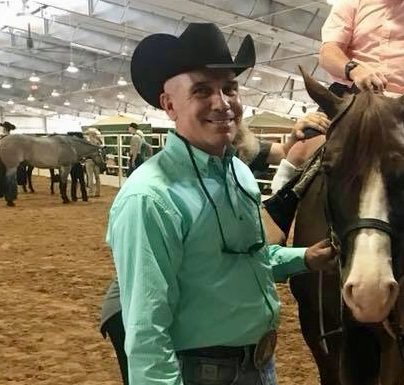 AQHA Professional Horseman Stephen Stephens of Dry River Ranch has been training horses for over thirty years. He explained that in evaluating the physical maturity of a longe-line prospect, you are looking for “the boy in seventh grade who is already shaving, the man-boy.”
AQHA Professional Horseman Stephen Stephens of Dry River Ranch has been training horses for over thirty years. He explained that in evaluating the physical maturity of a longe-line prospect, you are looking for “the boy in seventh grade who is already shaving, the man-boy.”
More specifically, this is a horse that is “going to have a little bit more muscling so that they can hold their bodies up and hold their cadence when they are on the longe line.”
Andy Cochran, who has been training western pleasure horses for twenty-five years, says that the readiness of a young horse to begin training often, “depends on the size” of the particular horse. “If one is physically a little bit stronger, their bodies can take a little bit more, so that is something that I look at,” he told us.
Young horses are similar to human athletes when it comes to strength and conditioning. Just as a senior in high school will have an easier time competing with a college athlete than a middle schooler, a stronger, more mature horse will likely handle training better than a weaker horse might.
Mental maturity is a must
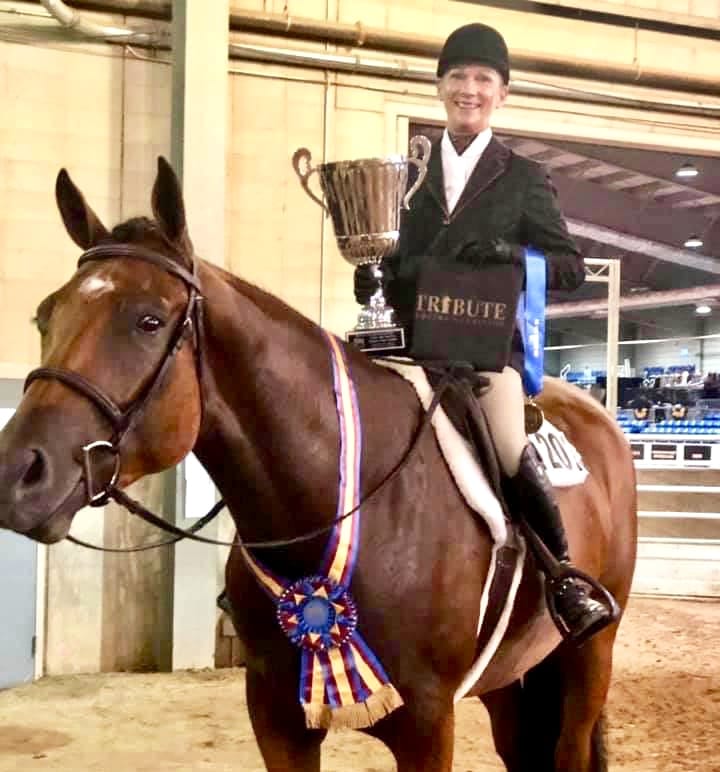 Not only does a young horse have to be physically strong enough to be able to withstand training, but it also has to have reached a certain level of mental maturity to truly benefit from the training process.
Not only does a young horse have to be physically strong enough to be able to withstand training, but it also has to have reached a certain level of mental maturity to truly benefit from the training process.
When asked to explain what indicates a mentally-ready youngster, Stephens said that he looks for “the ones that are very confident in what they do.” This confidence can be seen in “the independent ones that come up to you in the field, or the ones that don’t always have to run with the heard. They will go with the beat of their own drum, and they will be secure with it.” These horses will be more comfortable working by themselves and taking on new experiences as the training process begins.
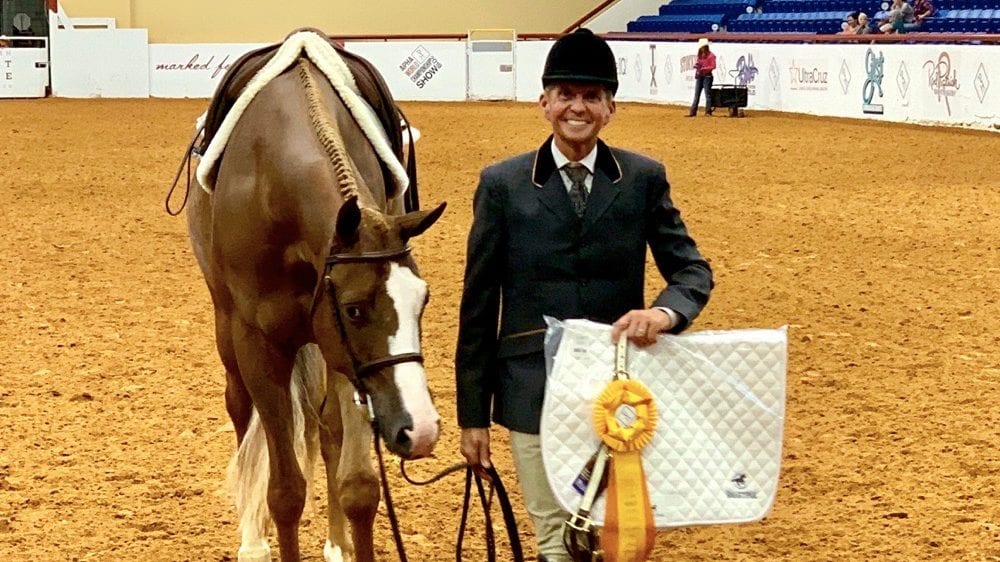 Brian Isbell Garcia has been training horses for over thirty years and has started some of the most well-known horses in the industry.
Brian Isbell Garcia has been training horses for over thirty years and has started some of the most well-known horses in the industry.
Isbell explained that after an “initial thirty to sixty days” of basic training and thirty days of rest, he evaluates which horses will make the early futurities, the late futurities, and which ones will begin showing in their three-year-old year.
The mental ability of each horse, he says, is vital in this process. “They pretty much tell me themselves, as far as their mind. The ones that it just comes easy to are the ones that I keep for the early futurities. If every day that I get on them, they retain what we did the day before, and I don’t have to backtrack, those are the ones that are going to make the early futurities,” he said.
Too much, too fast
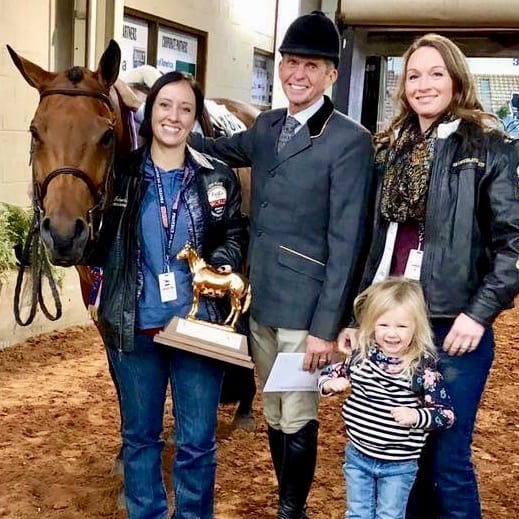 Each year when a child moves up a grade in school, they inevitably encounter increasingly challenging coursework. Sometimes, a class may be a bit too difficult for a student, and they begin to struggle with the coursework. This same concept can be seen in the newly started colts. The evaluation of a young horse’s readiness for training mustn’t end once the training begins.
Each year when a child moves up a grade in school, they inevitably encounter increasingly challenging coursework. Sometimes, a class may be a bit too difficult for a student, and they begin to struggle with the coursework. This same concept can be seen in the newly started colts. The evaluation of a young horse’s readiness for training mustn’t end once the training begins.
Isbell Garcia told us, “I think that our animals tell us a lot. Especially with the early ones that everything came easy for, if I feel like they are starting to regress a little bit, then I step back and ask, ‘is it something that I am doing? Am I pushing them too hard – do they need a week or two off? Or is it really that they weren’t as mature as I thought they were, and I need to step back and give them three months off?”
By paying close attention to a young horse’s progress, we can see how well they are handling the step up in grade level. Just like a student in school, each horse should be allowed to adjust as needed to ensure the least stressful and most successful training experience.
 Andy Cochran explained a similar process. When he feels that a horse is struggling mentally in his training program, “then that is a horse that [he] waits on.” He continued, stating that “an immature or weaker horse can still be a good horse, it’s just one that you put on the back-burner and slow it down a little bit.” Slowing down the pace of training allows the horse to gradually build up its mental maturity and physical tolerance so that it can eventually handle a more rigorous schedule.
Andy Cochran explained a similar process. When he feels that a horse is struggling mentally in his training program, “then that is a horse that [he] waits on.” He continued, stating that “an immature or weaker horse can still be a good horse, it’s just one that you put on the back-burner and slow it down a little bit.” Slowing down the pace of training allows the horse to gradually build up its mental maturity and physical tolerance so that it can eventually handle a more rigorous schedule.
Laney said that with the young halter horses, “if you push them too hard and put too much stress on their legs, that is something that could scar them for life. Even in the mental aspect, if they’re not ready to take it, they’ll get a bad, nervous attitude, go off their feed, and they’re not going to fit up for you.”
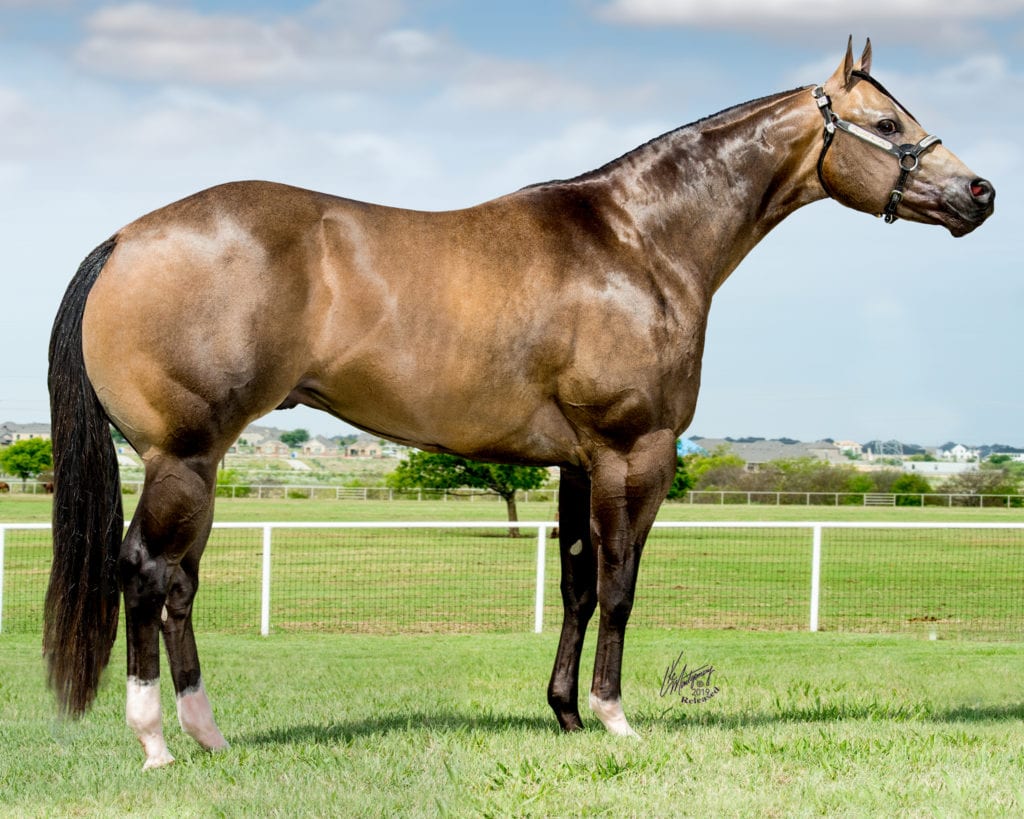 It is essential to keep in mind both the physical and mental well-being of the young horses, primarily through the first stages of training. Just as Laney said, asking for too much, too fast can leave a lasting impact that will continue to haunt that horse throughout its career.
It is essential to keep in mind both the physical and mental well-being of the young horses, primarily through the first stages of training. Just as Laney said, asking for too much, too fast can leave a lasting impact that will continue to haunt that horse throughout its career.
All-in-all, when evaluating a young horse’s readiness for training, it is vital to listen to each horse. Understanding a horse’s physical and mental well-being, both before and during the training process, will help ensure a positive experience for the horse that will be the first step toward a hopefully long and successful career in the show pen.


